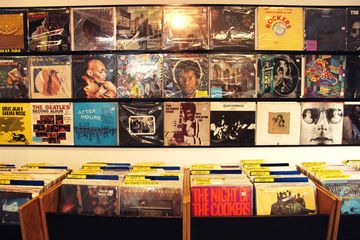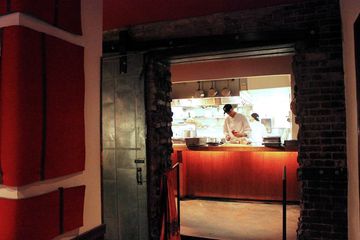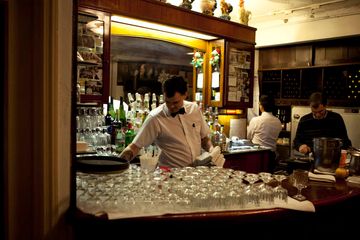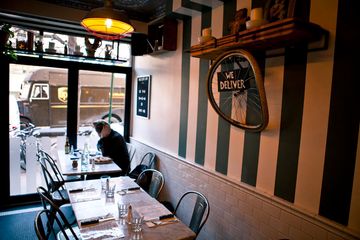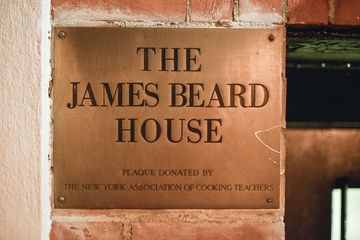Coppy Holzman moved to New York in 1976, and in the years since has undertaken multiple entrepreneurial projects. Most recently, alongside his daughter-slash-business-partner Logan Mikhly (who used to manage an animal rescue in New Orleans), Coppy opened Boris and Horton, a dog friendly café off of 12th street in the East Village. During our conversation, Coppy said, “I’ve moved away from New York here and there, but New York’s the best city on the planet, so why live any place else? ” (Relatable! ) But he and Logan had one issue: while walking around the city together, they found that there was nowhere they could stop in to eat or even grab a coffee with their dogs, Boris and Horton. They decided to solve this problem, and Boris and Horton opened its doors in February of 2018, offering great food and coffee, wine and beer in the evenings, and, of course, the opportunity for customers to spend quality time with their dogs, others’ dogs, and fellow dog-lovers. The vegetarian café sources its products from more than 20 local suppliers, including products from NYC staples such as pastries by Balthazar, cheese from Murray’s, Tea Pigs teas, and homemade syrups. The menu boasts both comfort foods and lighter options, and the wine and beer list rotates monthly - so there is always something new to try. But it’s not just humans who can get treats at Boris and Horton. For the pups, there are pupcakes, doggie doughnuts, french fries, beefcheek and other delicious delicacies made fresh by Maison de Paul. And when your furry friend is tired out from all the socializing and snacking, there are Casper dog beds available to fulfill all his napping-dreams. Logan and Coppy realized very quickly that Boris and Horton had become a community space. While half of their visitors are tourists, many of whom learn of Boris and Horton through social media or other news coverage, half of the customers at the café are neighbors of the business who have made Boris and Horton a “stop on their daily routine. ” In response to the café’s important role in locals’ daily lives, the father-daughter duo decided to expand their space, doubling it in size. In October of 2018 they opened the renovated extension, which includes an expanded seating area in the front, a colorful bespoke mural on the wall, and, notably, a party room in the back which is perfect for corporate events, human-birthday parties, dog-birthday parties, or any other kind of event you can imagine. Though the small fraction of the café’s space that includes the kitchen and main serving counter is not open to dogs due to health code requirements, the other 75% of Boris and Horton, including the entirety of the new extension, is completely dog friendly. Coppy assured me that New York is “a wonderful place for a dog, ” though before Boris and Horton New Yorkers might have struggled to find somewhere they could take their dogs along for Friday-night drinks. In fact, if you’re considering bringing a dog into your own routine, you can attend a weekend rescue event at Boris and Horton, where — just maybe — you’ll meet your new best friend. In collaboration with Muddy Paws Rescue, Boris and Horton has helped to find forever homes for up to twenty dogs in a weekend: pretty doggone amazing. If it’s human relationships that you seek, Boris and Horton may still be the place to go. With weekly events like trivia and bingo, Coppy and Logan are helping to “build up the community DNA. ” As Coppy told me, “Dogs are a great way to engage. . . it’s a catalyst for easy conversation. ” If customers meet at Boris and Hortonand end up dating, “then that’s even better! ” Coppy said. He even admitted that sometimes he’ll do a little matchmaking in the shop. And yes, there have been success stories. Then, of course, any weddings following such successes can be booked for the event space, and can even be ordained by Coppy himself, who is not only a matchmaker but also a minister. “I think people are wonderful, and they’re even better when they have a dog by their side, ” Coppy said, smiling. At Boris and Horton you’ll find the best of the best, from comfort food to good company — human or otherwise. On this little corner of 12th street, at least, Manhattan Sideways is happy to report that New York has officially gone to the dogs
